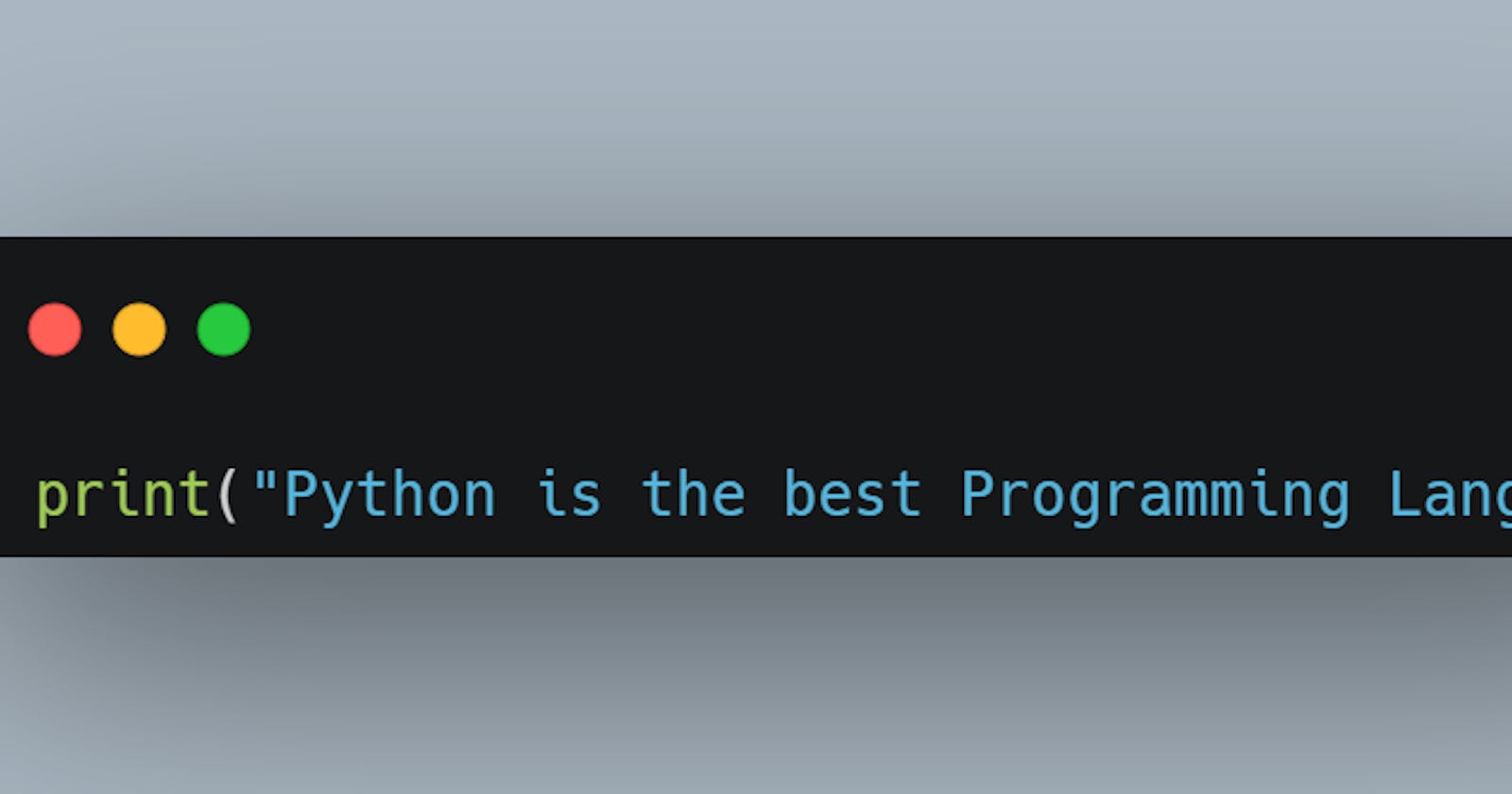Table of contents
Python is a popular high-level, interpreted programming language that is used for a wide range of applications. Some of the key features of Python include:
Simple and easy to learn: Python has a simple and straightforward syntax that is easy to learn, read and write. This makes it a popular choice for beginners and experienced programmers alike.
Interpreted language: Python is an interpreted language, which means that it does not need to be compiled before running. This makes the development process faster and more efficient.
Object-oriented programming: Python supports object-oriented programming (OOP) concepts, such as encapsulation, inheritance, and polymorphism, making it a powerful language for building complex software systems.
Cross-platform: Python can be used on multiple platforms, including Windows, Mac, Linux, and Unix, making it a versatile language for developing applications that can run on a variety of operating systems.
Large standard library: Python comes with a large standard library that provides a range of useful functions and modules, which can be used for developing different types of applications.
Dynamic typing: Python is dynamically typed, which means that variables can be assigned without specifying their data type. This makes coding easier and less error-prone.
High-level data structures: Python supports high-level data structures, such as lists, tuples, and dictionaries, which allow developers to build complex data structures quickly and efficiently.
Third-party libraries: Python has a vast collection of third-party libraries that can be used for various purposes, such as data analysis, scientific computing, web development, and more.
Readability and maintainability: Python emphasizes code readability and maintainability, which makes it easier to write and maintain large codebases.
Community support: Python has a large and active community of developers, which provides support, resources, and tools for developers who are building applications with Python.
Compiler vs Interpreter
| Compiler | Interpreter |
| A compiled language is a programming language whose implementations are typically compilers and not interpreters. | An interpreted language is a programming language whose implementations execute instructions directly and freely, without previously compiling a program into machine-language instructions. |
| There are at least two steps to get from source code to execution. | There is only one step to get from source code to execution. |
| A Compiler Translates the entire source code into machine code before executing it. | An Interpreter translates and executes line by line |
| A Compiler translates the entire code into machine code beforehand, the execution speed is generally faster than an interpreter. | An Interpreter, on the other hand, has to translate and execute each line of code, which can slow down the execution speed. |
| A Compiler detects errors in the source code during the compilation process and stops the execution of the program until the errors are fixed. | An Interpreter detects errors line by line as it executes the code, so it may continue to run even if there are errors in the code. |
| Compiled code is platform-specific, which means that the compiled code cannot be run on a different platform without recompiling it. | Interpreted code, on the other hand, is platform-independent, which means that it can be executed on any platform that has the interpreter installed. |
| Compiled code generally requires more memory than interpreted code because it contains the entire program in machine code. | Interpreted code, on the other hand, uses less memory because it only needs to store the source code and the interpreter. |
Other Small Features(Underated)
Multiple return values: Python functions can return multiple values separated by commas. This can be useful for returning multiple values from a function without having to use complex data structures.
Context managers: Python has a built-in mechanism called context managers that can be used to manage resources, such as files or network connections. Context managers simplify the process of managing resources by automatically closing or releasing them when they are no longer needed.
Generators: Python has a feature called generators, which are functions that can be used to generate a sequence of values. Generators can be used to efficiently process large amounts of data or to generate an infinite sequence of values.
Named tuples: Python's collections module has a data structure called Named tuple, which is a subclass of the tuple that allows the elements to be named. Named tuples can be used to create lightweight objects with named attributes.
Decorators: Python has a feature called decorators, which are functions that modify the behavior of other functions. Decorators can be used to add functionality to existing functions without modifying their code.
Conditional expressions: Python has a feature called conditional expressions, which allows you to write if-else statements in a single line of code. This can make code more concise and readable.
Mutable default arguments: In Python, function arguments with default values are only evaluated once when the function is defined. If the default value is a mutable object, such as a list or dictionary, changes made to the object will persist across function calls. This can lead to unexpected behavior and bugs.
Type hinting: Python 3.5 introduced the ability to add type hints to function arguments and return values. Type hints are not enforced by the Python interpreter, but they can be used by external tools to provide better code analysis and error checking
